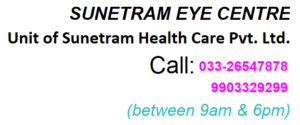Glaucoma Treatment
Glaucoma Treatment
Are you over 40 years old? If so, we recommend you get regular eye checkups to screen for glaucoma and vision loss. Here are some of the most modern optical techniques we use to treat glaucoma successfully.
Glaucoma is an eye disease that gradually damages the optic nerve. The optic nerve provides visual information to the brain from the eyes.
Glaucoma is an eye condition caused by a gradual deterioration of the optical nerve that can ultimately lead to blindness if not treated properly.
Causes, Symptoms, and Treatment of Glaucoma
Doctors believe that the following factors may lead to glaucoma:
- Blocked or limited drainage in your eye
- Medications, such as corticosteroids or dilating eye drops
- Lack of or reduced blood flow to your optic nerve
Typical symptoms associated with glaucoma include:
- Sudden decrease or transient loss of vision
- Intermittently seeing rainbow-coloured halos
- Double vision
- Intractable headaches
- Pupillary abnormalities, such as a difference in the size of the pupils
Glaucoma is usually treated by lowering your intraocular pressure. Treatment may include prescription eye drops, laser treatment, oral medications, surgery, or a combination of these, depending upon the severity of your condition.
You are in the right place if you are looking for glaucoma treatment in Howrah. At Sunetram, we assure you that we provide the best treatment for glaucoma.
- Goldmann Applanation Tonometry is one of the most accurate optical techniques for measuring intraocular pressure.
- Pachymetry This is a simple, painless test used to measure the thickness of the corneas.
- Humphrey Visual Field Analysis In this technique, the Humphrey field analyzer (HFA) tool measures the extent of the human visual field.
- OCT for Ganglion Cell Complex and RNFL Optical coherence tomography (OCT) is a non-contact optical technique that permits imaging and measurement of the Ganglion Cell Complex and retinal nerve fiber layer (RNFL)
- Trabeculectomy is a surgical procedure for lowering pressure inside the eye. It is considered the gold standard in glaucoma surgery.
- Glaucoma Valve Surgery This procedure uses a device with a valve that opens to drain excess fluid from the eye to an external reservoir.
Glaucoma Related FAQ’s
What are the different types of glaucoma?
The different types of glaucoma are
- Primary Open Angle Glaucoma
- Angle Closure Glaucoma
- Congenital Glaucoma
- Secondary Glaucoma
What are the risk factors for developing glaucoma?
The risk of glaucoma rises with your age. Some other risk factors are increased eye pressure, family history, conditions such as diabetes or high or low blood pressure, thyroid disorder, eye injuries, certain medications, high refractive errors, and use of steroids.
What happens after shunt surgery for glaucoma?
Avoid physical activities that strain your eye for several weeks after surgery. Use laxatives if you suffer from constipation to avoid straining while passing stools.
What is the success rate of glaucoma surgery?
Glaucoma surgery has about 70 to 90% success rate for at least one year in older patients.
How often should glaucoma be checked?
If you are above the age of 40, you should get examined periodically (once a year ) for glaucoma.
Will my vision be restored after treatment?
Unfortunately, any vision loss due to glaucoma is irreversible. However, you can maintain and prevent further vision loss with proper treatment.

